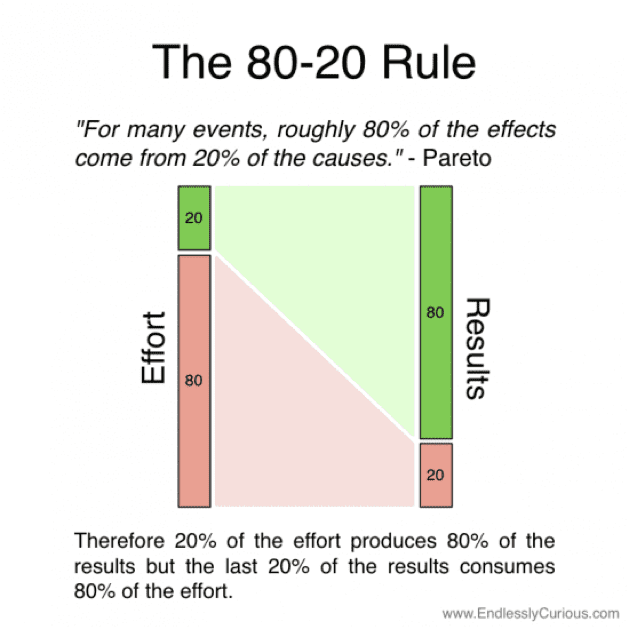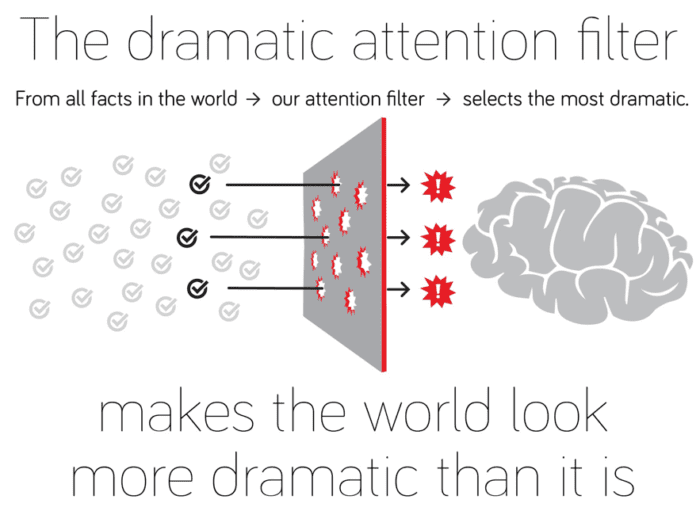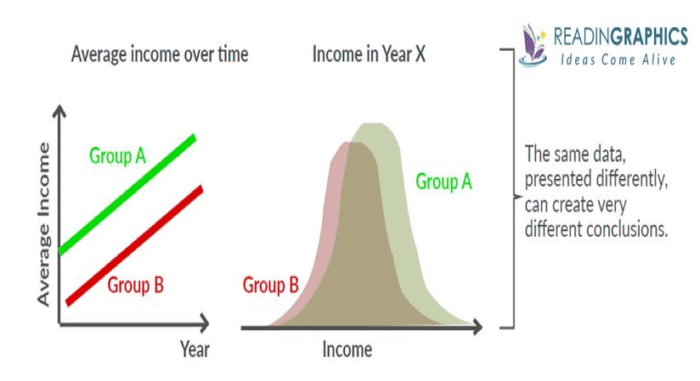Our dramatic instincts can affect our ability to make effective decisions
Hans Rosling is perhaps best known for his ground-breaking TED Talk "The best statistics you’ve ever seen'. Using innovative graphics, unique insights and humour, Hans brought to life little known facts about the developing world that no one had seen before.
In 2017, Hans decided to write a book called Factfulness. The primary objective of the book was to realize Hans’s lifelong mission of fighting devastating global ignorance and make an impact on the world: to change people’s ways of thinking, calm their irrational fears and redirect their energies into constructive activities.
In 2018, halfway through writing the book, Hans sadly passed away and Ola, his son, and daughter-in-law Anna, completed Hans’s work and produced one of the most widely praised books from last year. Factfulness made an indelible impact on the way I think and successfully encouraged me to take a more fact-based view of the world. This was largely down to the rigorous data that underpins the book and the stories and case studies used throughout to bring Factfulness to life.
Within the book, Hans Rosling identifies ten dramatic instincts that impact our understanding of the world. With so much information to process we have an attention filter in our heads. But this attention filter is hard-wired to make us care more about dramatic information, which easily leads to a stressful over-dramatic impression of the world.
Beware of these five instincts
Whilst reading the book, I couldn’t help but consider each of the ten instincts through a marketing lens. With so much data and misinformation to comprehend, it’s becoming more important than ever to take a fact-based view of the world. Whilst our decisions as marketers are unlikely to have life-changing consequences, they can lose businesses money and mislead consumers.
The Gap Instinct: look for the majority
Human beings have a strong dramatic instinct towards binary thinking. We tend to divide things into two distinct groups with nothing but an empty gap in the middle. In Factfulness, Hans talks about the out-dated 'developed' and 'developing' way of describing the world. Rather than two distinct groups, it’s more accurate to categorize countries by four income levels.
As marketers, we can sometimes fall foul of the gap instinct. When evaluating data, we often use averages. Whilst averages can convey information quickly, they can also be too simplistic. Averages mislead by hiding a range of different numbers in a single number. When comparing two averages, we risk misleading ourselves further by focusing on the gap between those two single numbers and missing the overlapping range of numbers that make up each average.
In the example below, we can see that the same data, presented differently, can create very different conclusions.
The Negativity Instinct: expect bad news
Hans Rosling talks about the 'mega misconception' that the world is getting worse. Whilst there are many bad things in the world, there are also many good things (something echoed in Steven Pinker’s 'Enlightenment Now').
Our negativity instinct means that we naturally notice the bad things rather than the good. Very rarely do we see positive stories leading the news. It’s all doom and gloom. But is this correct? Here are 32 improvements you may have never been aware of.
People’s bias towards negativity can impact our businesses. For example, say we’re running a hotel and receive a negative review. This is likely to stand out in prospective customers’ minds when they visit TripAdvisor. Even if all the other reviews are four or five stars, that sole one-star review will niggle away!
By being aware of the negativity instinct, we can take steps to respond. In our example above, we can counteract the negative review by incorporating the feedback to make positive changes and respond with a sincere apology. This puts the negative review into perspective and demonstrates to everyone else that this is really just a one-off.
The Size Instinct: get things in proportion
We instinctively look at a number on its own and misjudge its importance. The media is this instinct’s friend. Journalists will make any given fact or number sound more important than it is and focus on an individual event regardless of the broader context.
For example, Hans points out that in Sweden in 2004 the story of a fatal bear attack received widespread coverage in the media. On the same day, the murder of a mother of three by her partner received only modest coverage. This happened despite fatal bear attacks being a once-in-a-century event, whilst women are killed by their partner every 30 days (a 1,300 fold difference in magnitude). Both deaths are equally tragic, but when you compare the numbers the priority is clear.
Within the marketing profession, we can sometimes get swept up in the 'next big thing'. Whether it's voice search, influencer marketing or artificial intelligence, we’ve all been guilty of 'shiny object syndrome'. The size instinct means that outliers and one-off successes can throw us off course.
To combat the size instinct we must learn to compare the numbers and put things in proportion. For marketers, this means looking at the opportunity new technologies and tactics can deliver for our businesses. The 80/20 rule, also known as the Pareto principle, can help us work out what’s most important.

Some common patterns that Dave Chaffey has identified within digital marketing include:
- 80% of online sales are from 20% of products.
- 80% of search visits are from 20% of the keywords (often from brand-terms rather than generic).
- 80% of leads in content marketing are from 20% of the content assets.
- 80% of user tasks are performed on 20% of links offered (called the long-neck by Gerry McGovern).
- 80% of social shares are from 20% of the social updates.
The Single Perspective Instinct: get a toolbox
Forming your worldview by relying on the media is like forming your view on a car by focusing on the exhaust pipe. The picture of the exhaust pipe isn’t lying but it’s not showing us the whole picture.
We find simple ideas very attractive and enjoy a moment of insight that makes us feel as though we really know or understand something. The idea that a simple, big idea can solve all problems is very appealing. However, both political and professional ideology can lead to many wrong - and sometimes even dangerous - opinions.
From a marketing perspective, this happens all the time. Marketers with a particular skill or expertise look for ways to apply their hard-won knowledge beyond where it’s actually useful. Analysts can get fixated on the numbers, creatives argue for better copy and design, marketing directors become obsessed with strategies that worked in previous roles. Great knowledge can interfere with our ability to see what really works.
To counter the single perspective instinct, we need to break out of our comfort zone and test our ideas for weaknesses. We must become curious about new information and look at problems from many angles to make a more accurate assessment of the challenge at hand and find practical solutions. Instead of using just one tool to solve a problem, we must build a toolbox.
The Urgency Instinct: take small steps
The urgency instinct is something we will all be very familiar with as marketers. Make a quick visit to an online store and you’ll soon see signs and banners for 'order now', 'only two remaining' and 'reserve now before it’s too late'. It’s a common sales tactic that deliberately triggers consumers’ urgency instincts and something I’ve have blogged about before for Smart Insights.
Whilst we may employ scarcity tactics as marketers, we’re also vulnerable to the urgency instinct in our day-to-day roles. The urgency instinct would have served us well in the distant past when we needed to act quickly to avoid being eaten by a lion. But now that we have eliminated most immediate dangers, we are left with more nuanced, complex problems that require deeper analysis.
When faced with an urgent crisis, for example, a sudden change to Google’s algorithm or a social media/ PR blunder, the urgency instinct makes us stressed and blocks us from thinking analytically which leading to drastic actions. When faced with these situations, it’s important to pause, take a breath and control this instinct:
- Ask for more time and more information: It’s rarely now or never and it’s rarely either/or.
- Insist on the data: Beware of data that is relevant but inaccurate, or accurate but irrelevant. Only relevant and accurate data is useful.
- Be wary of drastic action: Ask what the side effects will be. Step-by-step practical improvements and evaluation of their impact are less dramatic but usually more effective.
Conclusion
Factfulness is a habit for critical thinking. It helps us maintain a fact-based worldview and teaches us how to recognize and avoid the most common ways information gets misinterpreted.
Our roles as marketers are varied and wide-ranging but the one constant is the need to interpret and use data to make decisions. Although I’ve highlighted only five instincts, there are ten in total that we should all bear in mind in our day-to-day interacts in the workplace.
Factfulness is the skill to recognize the common types of stories that get all the attention because they trigger our dramatic instincts. It’s our responsibility to recognize what types of stories trigger these instincts and control our intake of drama so we can manage information, data and decision-making more effectively.









